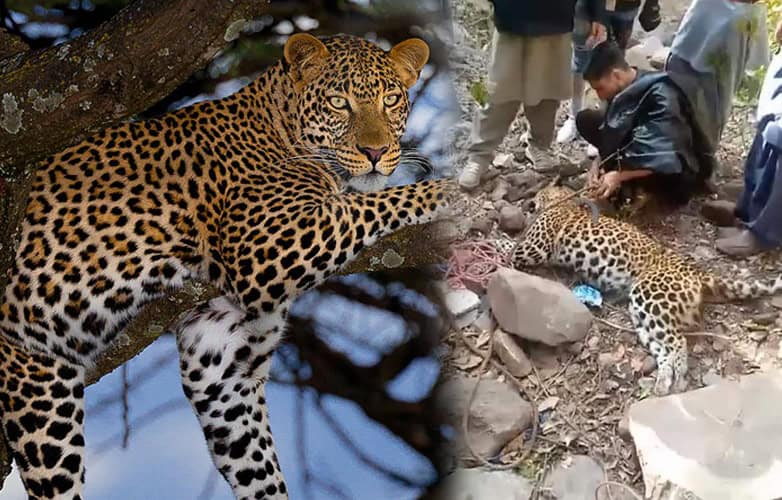MUZAFFARABAD – Just two weeks after a common leopard was killed by a mob near Neelum River, another big cat was put to death in Jhelum valley of Azad Jammu and Kashmir on Tuesday.
Islamabad Wildlife Management Board (IWMB) chairperson Rina S. Khan Satti said another leopard was killed in the Hattian Bala area of the valley earlier today.
In a series of tweets, Khan shared a clip and wrote that a mob of 200 villagers killed the wild animal who came near a village in Jhelum Valley’s Hattian Bala.
Heartbreaking news: yet ANOTHER common leopard killed today in Azad Kashmir by villagers. A mob of 200 attacked leopard who came near village & killed animal mercilessly. AJK wildlife was not informed in time. The culprits MUST be punished. unacceptable! @WildlifeBoard pic.twitter.com/aH1FKAM9uq
— Rina S Khan Satti (@rinasaeed) February 8, 2022
Wildlife officials were not informed about the presence of the leopard in time, she pointed out, saying it was unacceptable for the authorities.
“Around 200 persons ganged up against one cat. Someone called AJK wildlife at 7 am. Villagers could have hidden in their homes. By time AJK wildlife arrived at 9 am villagers had killed the leopard! Why couldn’t they have waited?” she asked on social site.
Here are animal lovers driving 2 poached leopard cats all the way from Karachi to Isd so they can be released safely into MHNP & there they are villagers in AJK brutally killing a beautiful leopard who dared to come near village. Some days are so difficult 😞 @WildlifeBoard pic.twitter.com/GYarCheHhH
— Rina S Khan Satti (@rinasaeed) February 8, 2022
The recent incident occurred two weeks after a female leopard succumbed to deadly wounds in the country’s federal capital. The endangered specie was hunted down as the medical team found six bullets from her body.
Injured leopard dies a day after being rescued from AJK’s Neelam River
Leopards are distinguished by their well-camouflaged fur and are vanished from at least half of their historic range in Africa and Asia.
These animals are listed as “near threatened” on the International Union for the Conservation of Nature (IUCN) Red List of Threatened Species.














